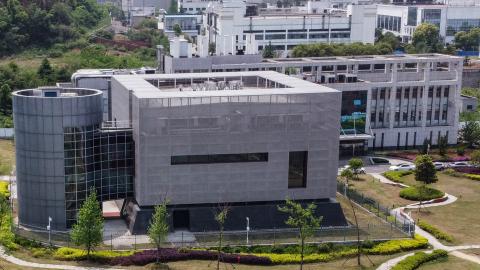One of the most positive developments regarding China-U.S. relations in recent years has been how the military-to-military relationship has expanded in size, broadened in scope, and persisted without interruption despite the inevitable disputes and disagreements that always trouble such a complex relationship. In addition to the many reciprocal visits of senior military officers and the joint interactions on exercises and other projects, the last few years have seen a welcome Chinese effort to become more transparent in military capabilities and activities. Although China, like other countries, continues to withhold much information on national security grounds, we should acknowledge this positive trend.
For decades, the People’s Republic of China (PRC) highly valued military secrecy. Even after the People’s Liberation Army (PLA) began to interact more with foreign militaries following the Cold War, its leaders did not show much interest in developing the kinds of dialogues and confidence-building measures with the United States that the Pentagon had established with the Soviet Union and other countries. Washington always had to take the initiative in pressing for more defense diplomacy and transparency.
Several reasons probably explain Chinese unease with defense openness. When the PLA was considerably weaker than the United States and other powers, Chinese policy makers naturally feared that excessive transparency could expose vulnerabilities to potential foes. As leaders of a rising military power, PRC policy makers have been reluctant to freeze existing military balances and operating patterns that were becoming more favorable to Beijing over time. Furthermore, Chinese leaders did not want to highlight their rapidly modernizing defense capabilities for fear of provoking foreign countermeasures.
Conceptual differences have also been at work. Whereas the Pentagon pursues deterrence through certainty, the PLA seeks deterrence through uncertainty. U.S. policy makers believe that they can best deter possible foreign aggressors by demonstrating superior military capabilities and a willingness to use them. In contrast, Chinese strategists believe that concealing China’s military assets and plans helpfully complicates foreign military efforts to target or respond to them. Another difference is that U.S. analysts often see transparency as helping build mutual trust, whereas the Chinese position has been that strategic trust is a prerequisite for meaningful military dialogue and data sharing.
Furthermore, the Pentagon is already very transparent to outsiders about its policies and programs due to the demands of the U.S. Congress, the vigorous U.S. news media, and the U.S. Defense Department’s extensive foreign operations. While the PLA would gain little from further U.S. military transparency, the United States has refused to remove the three obstacles that the Chinese government has consistently cited as the main obstacle to better Sino-America defense ties—U.S. arms sales to Taiwan, U.S. military operations close to China’s territorial waters and airspace, and congressional restrictions on U.S. defense technology exchanges with China.
U.S. officials have constantly cited the benefits to China of more military transparency. Among other problems, foreign countries concerned about China’s military potential can more easily accept worse-case scenarios and respond by building up their own militaries, which harms China’s security and generates avoidable regional arms races.
Furthermore, limited mutual understanding makes it more difficult for U.S. and Chinese policy makers to interpret how they are responding to crises. While one side might place its forces on alert as a defensive move, the other might misinterpret the step as preparation for an imminent attack and decide to preempt—leading to a war that neither side sought.
In addition, PLA opaqueness could mislead China’s own political leaders regarding their country’s actual military capabilities. For example, they might overestimate the PLA’s ability to accomplish some military operation. PLA commanders could also exploit secrecy to conceal corrupt practices and inadequacies within their units—a problem that has constantly bedeviled Russian civil-military relations.
However, in recent years the PLA, traditionally a large unsophisticated military designed for long wars of attrition, has transformed into a more technologically advanced force with a global presence that leads to more encounters with foreign militaries. Perhaps as a result of this changed situation, Chinese declarations and more recently actions have displayed a growing wellness to meet foreign complaints that China needs to make its defense policies more transparent to outsiders.
The Chinese government’s “white papers” on its security and defense policies have provided more detail over the years, evolving from primarily propaganda documents when they first appears in the 1990s to rich descriptions of China’s security environment, including perceived threats and opportunities. The Chinese media is now more open to providing the names and other details of PLA units. The PRC also releases information about major military systems under development, including successful tests of warplanes and missile defense technologies.
Earlier this month, China even met a U.S. request to allow Defense Secretary Chuck Hagel to visit the PLA’s first aircraft carrier. “The secretary was very pleased with his visit today aboard the carrier Liaoning,” a Pentagon spokesman said. “He understands how significant it was for the PLA to grant his request for a tour, and … hopes today’s visit is a harbinger for other opportunities to improve our military-to-military dialogue and transparency.”
Even so, the PRC government still provides less public defense information than many of China’s neighbors. China could reveal more information, such as regarding foreign military procurement or its cyber doctrines, without harming its security.



















